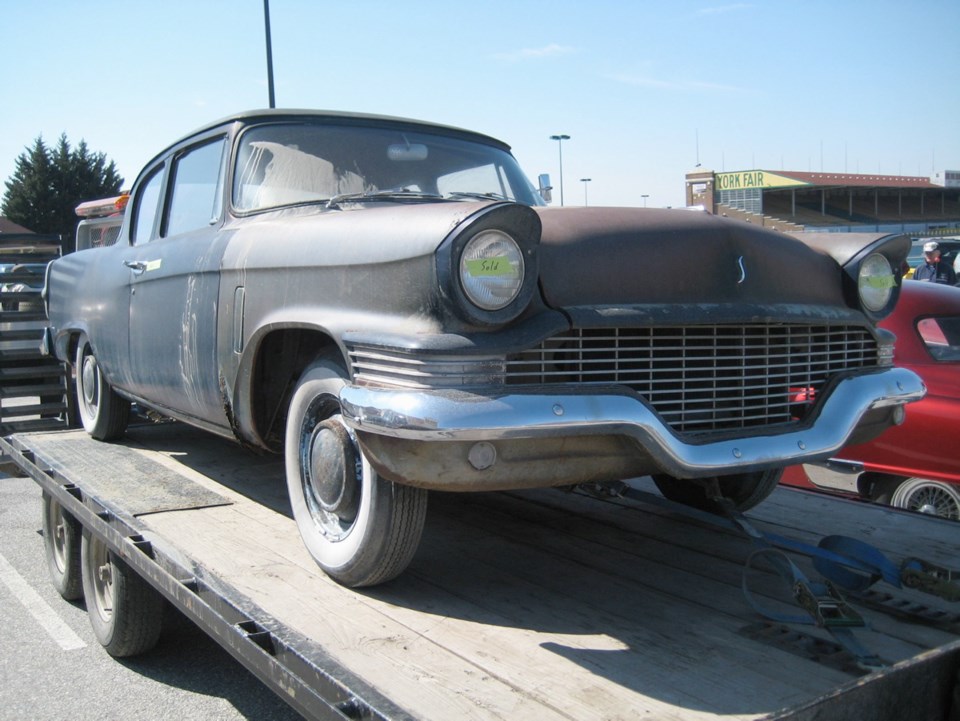Studebaker enjoyed a long and respected reputation in the automobile business, but by the late 1950s, industry consolidation and stiff competition from the Big Three (General Motors, Ford and Chrysler) and American Motors was putting it under extreme financial pressure. It joined with Packard in 1954, but Packard’s prestige was diminished and it disappeared in 1958.
Studebaker needed something different, so for 1957 it decided to offer a bare-bones model to try stealing market share from the Big Three’s lowest-priced models and AMC’s Rambler. They were also watching the rising import penetration led by a little beetle-shaped German car.
Although AMC was planning to bring back its small 2,540-millimetre-wheelbase Rambler in 1958 as the American, North America was still predominantly a big-car market. Fins, chrome and garish three-tone paint treatments were common, bumpers were massive and grilles were studies in flamboyance.
Some cars are out of sync with their times, and although a short economic recession had begun in 1957, Studebaker’s new austere model still seemed at odds with that gaudy decade.
It wasn’t the first time there had been a market mismatch. Huge multi-cylindered 1930s Cadillac V-12s and V-16s, Marmon V-16s, Packard V-12s and mighty Duesenbergs, for example, were all wrong for the 1930s Depression.
And so, it seemed, was the Spartan new Studebaker Scotsman in the flashy fin-fad ’50s. But desperate companies do desperate things, and the Scotsman looked like one of them. There was no question why it was brought to market; its name reinforced a thrifty Scottish mentality.
The Scotsman was introduced in May 1957, midway through the model year. Based on the Champion, it came as a two- or four-door sedan or two-door station wagon.
To create the Scotsman, Studebaker stripped the Champion so naked it evoked memories of the 1942 “blackout” cars built just before the United States entered the Second World War. But it met its goal of letting Studebaker advertise the $1,776 two-door Scotsman as “America’s lowest-priced car.”
To save money, the Scotsman’s grille and hubcaps were painted rather than chrome plated, although buyers could pay extra for chrome. Bumpers were normally chromed, but a very frugal customer could save more money by having them painted, too.
In keeping with the Scotsman’s thrifty demeanour, Studebaker offered few options. A basic heater, not the “Climatizer” fresh air type available in other models, was standard. Electric windshield wipers were extra (vacuum-powered was standard) while inside, armrests and a passenger-side sun visor were also optional.
Parsimonious buyers experienced their economy quietly because no radio was available. Studebaker tried to turn this into an advantage by advertising the Scotsman as “devoid of costly gadgetry,” right down to no automatic choke.
Driver and passengers were reminded of the Scotsman’s starkness as they rode on basic grey vinyl seats in a painted cardboard interior and rested their feet on rubber mats. Rear side windows did not open.
Underneath, the Scotsman was pure Champion, which meant body-on-frame construction with independent suspension via A-arms and coil springs in front and a solid axle on leaf springs at the rear. It had a 2,959-mm wheelbase.
A 3.0-litre (185.6 cu. in.) side-valve inline six that traced its heritage back to the original 1939 Champion sent 101 horsepower to the rear wheels through a three-speed, column-shifted manual transmission (overdrive optional). No automatic was available.
In spite of Mechanix Illustrated’s witty car tester Tom McCahill saying the Scotsman “went over like girlie pictures in a nudist camp,” Studebaker sold a surprising 9,000 in its first short model year, more than double the company’s expectation. Apparently, the recession put a lot of motorists in a back-to-basics, no-frills mood.
Studebaker took the Scotsman into 1958 with minor changes. While the Champion got tailfins and quad headlamps, the Scotsman didn’t. It was offered through the 1958 model year, and then in spite of a good showing of almost 21,000 sales, it was discontinued in favour of the new 1959 Lark. Like the Scotsman, the Lark was fashioned out of the Champion, which was discontinued.
For the Lark compact, Studebaker cut the Champion’s wheelbase by 203 mm and its length by 696 mm. Decreasing the stroke 9.5 mm reduced the engine from 3.0 litres to 2.8 (169.6 cu in.) for better fuel economy. Horsepower dropped from 101 to 90. Zero to 100 km/h was in the 20-second range.
The Lark was an instant success. It sold more than 130,000 1959 models and the forlorn Scotsman was soon forgotten. But it had helped Studebaker over a difficult period, and while the ugly duckling definitely didn’t turn into a swan, it did post some unexpectedly good sales numbers.



